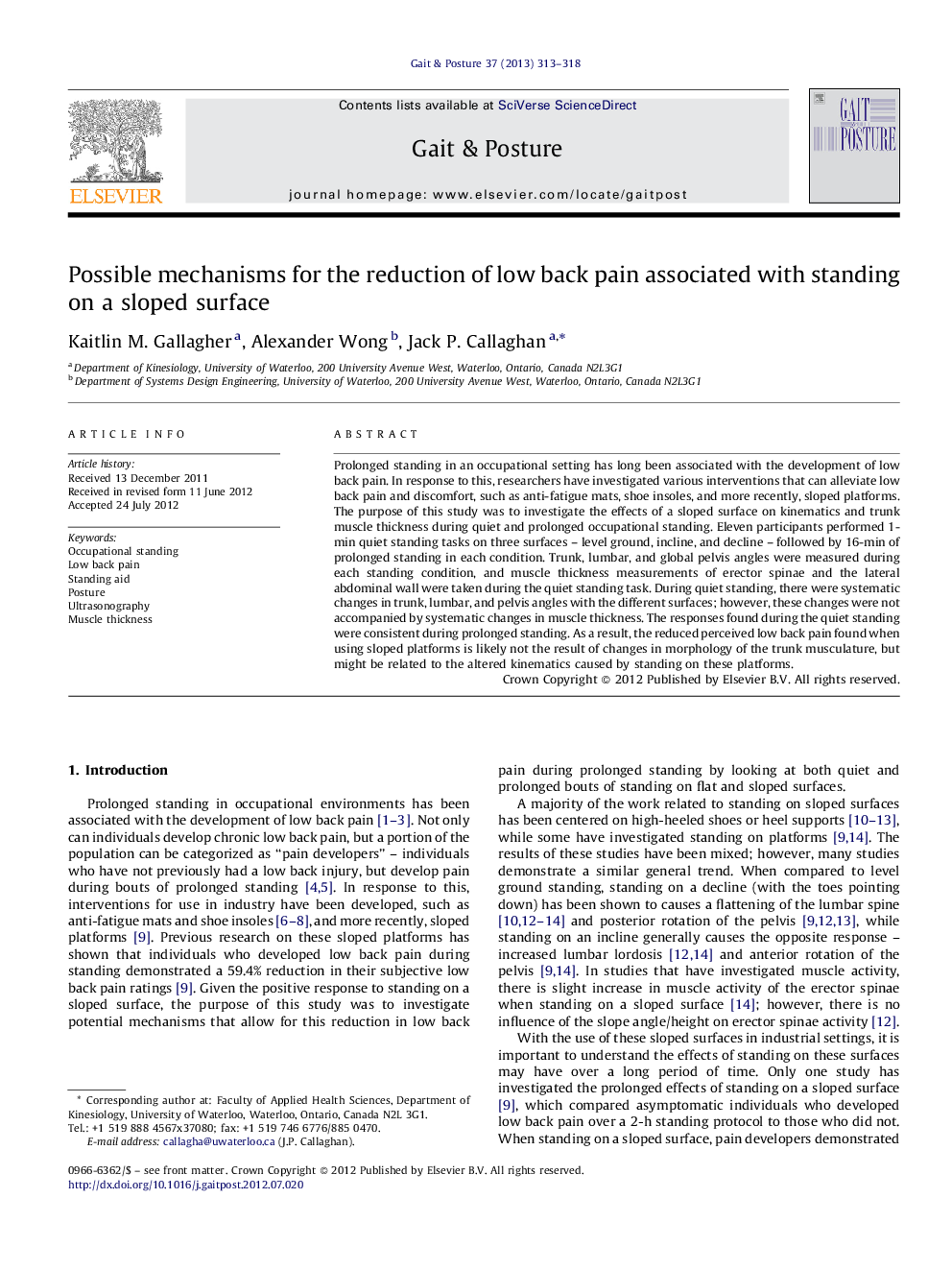| کد مقاله | کد نشریه | سال انتشار | مقاله انگلیسی | نسخه تمام متن |
|---|---|---|---|---|
| 6207545 | 1265663 | 2013 | 6 صفحه PDF | دانلود رایگان |
Prolonged standing in an occupational setting has long been associated with the development of low back pain. In response to this, researchers have investigated various interventions that can alleviate low back pain and discomfort, such as anti-fatigue mats, shoe insoles, and more recently, sloped platforms. The purpose of this study was to investigate the effects of a sloped surface on kinematics and trunk muscle thickness during quiet and prolonged occupational standing. Eleven participants performed 1-min quiet standing tasks on three surfaces - level ground, incline, and decline - followed by 16-min of prolonged standing in each condition. Trunk, lumbar, and global pelvis angles were measured during each standing condition, and muscle thickness measurements of erector spinae and the lateral abdominal wall were taken during the quiet standing task. During quiet standing, there were systematic changes in trunk, lumbar, and pelvis angles with the different surfaces; however, these changes were not accompanied by systematic changes in muscle thickness. The responses found during the quiet standing were consistent during prolonged standing. As a result, the reduced perceived low back pain found when using sloped platforms is likely not the result of changes in morphology of the trunk musculature, but might be related to the altered kinematics caused by standing on these platforms.
⺠Participants stood on three surfaces: level ground, an incline, and a decline. ⺠We assessed posture and muscle thickness using ultrasonography during each condition. ⺠Trunk, lumbar, and pelvis angles were affected by the sloped surfaces. ⺠No accompanying changes in trunk muscle thickness when standing on the sloped surfaces. ⺠Reduction of LBP likely driven by postural versus muscular changes with a sloped surface.
Journal: Gait & Posture - Volume 37, Issue 3, March 2013, Pages 313-318
